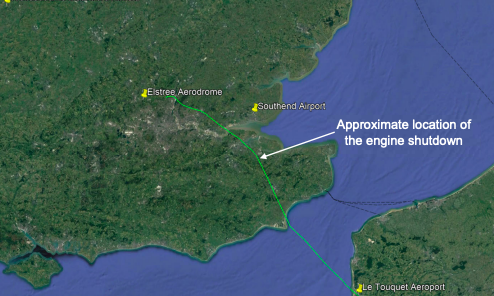Decision-Making Under Pressure: Pilot Continues Flight Without Left Engine

During an IFR flight from Le Touquet to Wellesbourne, the pilot observed oil leaking from the left engine followed by engine vibration. He shut the engine down and descended but elected to continue the flight toward Wellesbourne. On reaching 2,000 feet, he found he was unable to maintain level flight on one engine and decided to land in a field near Enfield.
The AAIB (Air Accidents Investigation Branch) investigation found the left engine failed due to a fatigue crack in one of the cylinder barrels.
It is likely that the pilot was unable to maintain level flight on the right engine due to a combination of engine wear, which resulted in reduced power, and the prevailing weather conditions. His decision to continue the flight following the engine shutdown was probably influenced by high workload and plan continuation bias.
As a result of the AAIB’s findings, the aircraft’s maintenance organization has amended its maintenance program for aircraft fitted with piston engines operating beyond the manufacturer’s recommended overhaul life. This includes a rate of climb air test to detect a loss of engine power output and the introduction of an oil sample analysis monitoring program.
Photo and content credit: Air Accidents Investigation Branch, “AAIB Report: Piper PA-23-250 (G-BJNZ), Engine failure during IFR flight.” Read the full AAIB report.
Circumstances can crop up anywhere at any time if proper and safe sequence and procedures are not planned and followed.
We encourage you to learn and use the TapRooT® Root Cause Analysis System to find and fix problems. Register for one of our TapRooT® RCA courses.
We offer a basic 2-Day Course and an advanced 5-Day Course. You may also contact us about having a course at your site. If you need help, reach out at (865) 539-2139.



